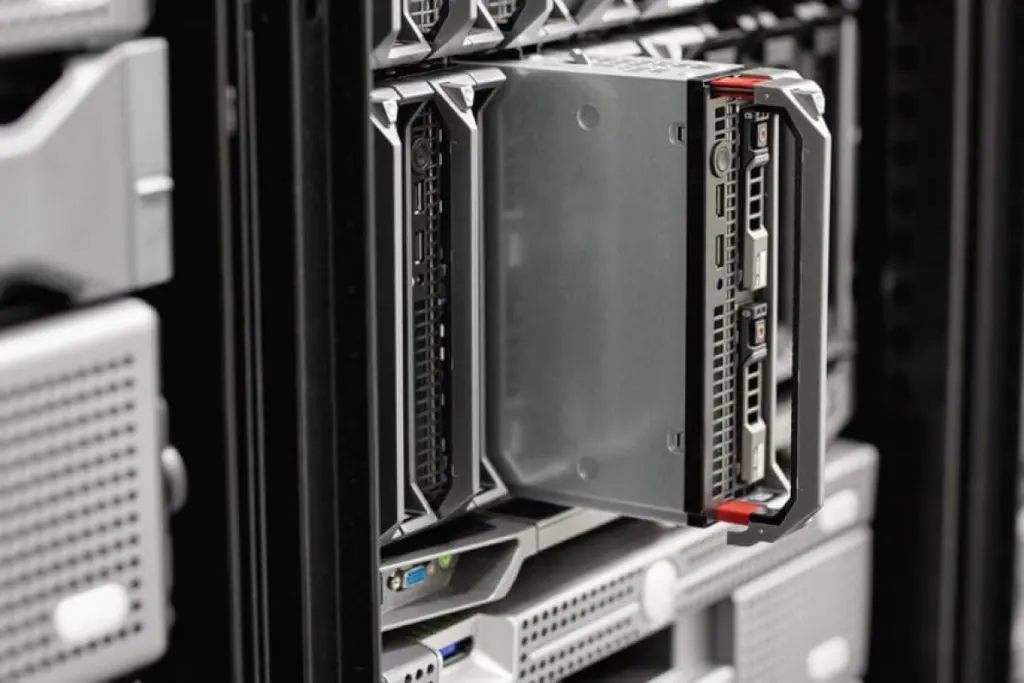Discover 4 requirements for a complete IT infrastructure in your company!
A well-planned IT infrastructure solution can significantly reduce costs and increase revenue. As an organization grows rapidly, its IT infrastructure grows even faster – from a few servers to large data centers housing modern technologies. Thanks to virtualization, a single physical server can now host multiple virtual servers. So, what is the best infrastructure solution? First, let’s take a look at what’s “inside” an IT infrastructure.
What makes up a good IT infrastructure solution?
Even before considering visiting IT infrastructure solution providers, you need to know what IT infrastructure consists of. Its components include hardware, software, network resources, and services necessary for the successful operation of an organization. The most typical components of infrastructure are:

Hardware

Software

Network
4 functions that a complete IT infrastructure must have?
For an IT infrastructure to work well in your business environment, it must be:
1) Optimized WAN network [*within the company]
Using WAN optimization, you can ensure better network management. With it, you can prioritize traffic and ensure that business-critical applications get the necessary bandwidth. Let’s look at some of the technologies used:
– Traffic shaping: Traffic is prioritized, and bandwidth allocation is performed.
– Data deduplication: This eliminates redundant data. Instead of sending the actual data, references are sent.
– Data compression: This reduces the data size to limit bandwidth usage.
– Data caching: Frequently used data is localized on a local server for faster access.
The importance of WAN optimization is greater in today’s business environment, where more companies are moving to the cloud. There are two ways to address this: first, purchase more bandwidth; second, use the existing bandwidth more efficiently.
2) High-performance storage [*can be provided remotely by a hosting company]
The need for block and file storage products and solutions is essential to meet the unique demands of Big Data and the web. Various storage technologies are currently in use—here are some of them:
– Disk storage systems: Enterprise SAN and NAS.
– Disk backup systems: Virtual library systems, D2D backup, removable disks.
– Backup and archive solutions.
– Virtualized and unified storage solutions.
3) Virtualization [*can be provided remotely by a hosting company]
Server virtualization is a technology that has existed for many years, yet some still consider it new. Any multimedia integration is simple, and it provides efficiency and capabilities not possible in the physical world. Virtualization has many advantages:
– Energy savings: Virtualization can save a lot of energy. This means cost reduction, greater savings, and more budget focus on other areas.
– Faster server provisioning: With server virtualization, administrators can provision and deploy systems in a short time.
– Increased uptime: Virtual servers offer advanced features not available on physical servers. This increases uptime and business continuity.
– Promotes cloud computing.
As for implementation, prior experience helps. A virtualization project will cover:
– Server consolidation and infrastructure optimization.
– Desktop virtualization.
– Storage virtualization.
– Server virtualization.
4) Security [*can be provided remotely by a hosting company]
Security plays a key role in IT infrastructure. Areas where security is critical include:
– Information access control: This allows managed and defined access to information. It involves identity management and network access control. Simple access to critical resources is granted only after successful authentication.
– Standards implementation: Implementing ISO/IEC standards makes systems more secure. These are widely used and help formulate security policies, so it’s important that business processes align with international standards.
– Data availability: Security is essential to ensure data availability post-optimization. While device management can be simplified with NAP, a well-designed security policy will define the business continuity process.
Conclusion
IT infrastructure is the foundation of any organization. Doing it carefully will save you a lot of effort while improving work efficiency and achieving business goals. Outsourcing IT infrastructure management is a great but challenging decision.
Choosing the right solution is often complex and requires solid technical knowledge. It’s recommended that a representative inquire about their biggest and most obvious technological fears and needs. While entrusting it to the wrong hands can lead to technological nightmares, placing it in the right hands will trigger a chain of events leading to your business’s success.
Reduced capital expenses, improved security, and the ability to focus on core business are just some of the benefits of placing your technology infrastructure in the right hands.